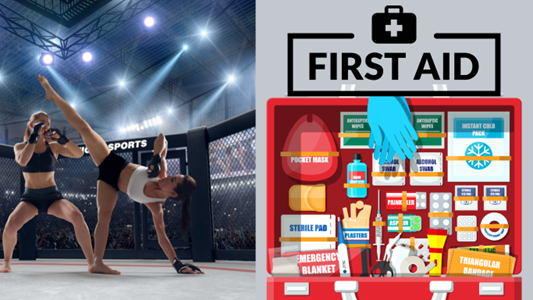In the high-impact world of Mixed Martial Arts (MMA), where precision, strength, and agility are paramount, the significance of safety cannot be overstated. While fighters dedicate countless hours to honing their techniques, integrating comprehensive safety measures into training routines is equally crucial. Programs like Coast2Coast First Aid and CPR training Edmonton offer invaluable skills that not only enhance personal safety but also foster a culture of preparedness within the MMA community.
The Physical Demands of MMA Training
MMA training is an intense fusion of disciplines—boxing, wrestling, jiu-jitsu, Muay Thai, and more—all requiring explosive movement, full-contact sparring, and unrelenting endurance. Athletes routinely push their limits to condition their bodies for real-time combat scenarios. But such intensity comes at a cost: joint strains, concussions, and even more severe injuries can result when safety is not prioritized.
Consistent warm-ups, flexibility routines, and strength conditioning are non-negotiable for injury prevention. Just as importantly, having trained personnel on site who know how to respond to injuries quickly and effectively adds an extra layer of security that shouldn’t be overlooked.

Mental Resilience and Situational Awareness
Physical toughness alone doesn’t define a fighter. Mental resilience—staying calm under pressure, recovering from setbacks, and making fast decisions in a high-stakes environment—is a critical asset. This mental discipline doesn’t just apply in the octagon; it applies when someone goes down hard during sparring, when a teammate has a panic episode, or when equipment malfunctions mid-session.
Situational awareness, both in and out of the cage, is what separates seasoned athletes from amateurs. Training programs that incorporate safety protocols, reaction drills, and even stress simulations help fighters develop faster, safer responses to real-world emergencies.
The Overlooked Weapon: First Aid and CPR Knowledge
Let’s face it—every gym eventually deals with a medical incident. Whether it’s a rolled ankle during drills or an athlete going unconscious during a choke, how prepared are your coaches and teammates to respond in those first crucial minutes?
That’s where first aid and CPR training becomes a game-changer. It’s not just about checking a box for insurance—it’s about real skills that can stabilize injuries or save lives. Knowing how to properly move someone who’s been knocked out, stop severe bleeding, or handle heatstroke during summer training can dramatically alter outcomes.
MMA gyms that integrate this type of safety training build stronger, more self-reliant communities—and gain a serious edge in long-term athlete care.
How to Build a Safety-First Culture in Your Gym
Developing a culture where safety is second nature doesn’t require overhauling your training program. It starts with small, consistent steps:
- Hold Safety Refreshers Regularly
Don’t treat safety training as a one-and-done seminar. Bring in certified trainers every 6–12 months for first aid refreshers, emergency drills, or Q&A sessions. - Make Injury Reporting Encouraged (Not Discouraged)
Too many fighters “tough it out” and hide injuries. Foster an environment where reporting issues is respected—not shamed—because longevity matters more than pride. - Keep an Emergency Kit and Plan Visible
Every gym should have a clearly marked emergency kit with essentials and a list of action steps for different incidents. Everyone—from white belts to coaches—should know where it is. - Highlight and Reward Safety Awareness
Recognize fighters and staff who promote safety. A small shoutout can reinforce that it a valued part of your gym culture.
Long-Trm Payoffs of Prioritizing Safety
Some might think emphasizing safety is “soft,” but it’s the opposite. Professional fighters know that the ones who make it to the top are those who can train consistently for years—not those who burn out after one bad injury. Prioritizing health and preparedness now means more mat time, more growth, and more career longevity.
It also builds trust with your members. Parents sending their teens to train, or older fighters returning after layoffs, are far more likely to stay loyal to a gym that shows it values their well-being.
Conclusion
As MMA continues to rise globally, it’s time the community raises the bar—not just in technique, but in safety and awareness. By embracing safety training programs, fighters and coaches alike commit to a higher standard of preparedness, accountability, and care.
In the cage, survival belongs to the fittest. But outside the cage, it belongs to the most prepared. Be both.


